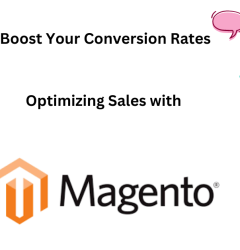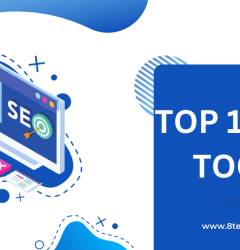04 Jun

Introduction to Different Types of Performance Marketing
Performance marketing works in a simple way. In essence, you only pay for the performance you get from the campaign, and you can measure that performance in any form you want. People often go for ad clicks, new leads, conversions, etc. We know it all sounds like a new thing, but it has been around since the mid-90s when PPC advertising became a thing. Sounds intriguing? Well, keep on reading then, as this is your introduction to different types of performance marketing.
However, before we dive into the types, we want to take a step back and start at the beginning. Although it’s been here since the 90s in one form or another, performance marketing is becoming big right now. And we can only thank the rise of information technology for that. Today’s access to data lets us reach more people and reduces the cost of advertising.
Now, let’s take a look at what precisely performance marketing is.
What Is Performance Marketing?
Simply put, performance marketing is when you pay only for the measurable results that you get. If the customers don’t take the actions you want them to, you don’t owe the agency or advertisers. And when you think about it that way, it’s clear why it’s so tempting for small and medium businesses to go down this route.
In more traditional forms of marketing, you pay upfront for the company’s effort in the hope that you’ll get the results you’re after. For example, you’re paying for your ad to show up in a magazine, and you’re hoping that it’ll get people to visit your store. So, there’s no guarantee it’ll work, and you don’t have the safety net to soften your fall if it comes to that.
Performance marketing is pretty much the opposite of it. Here, you’re paying for the results, and you don’t have to worry about how much effort they’ll have to put in to make it happen.
Performance Marketing Pricing
Now that you know how it all operates, we’re one step closer to learning about the different types of performance marketing. However, it would help if you first learned how the pricing works to understand them better. Then, when the time comes to apply it to your business, you won’t be stuck figuring out what you need and what you want — you’ll know what you need to go for right away.
Here are the pricing options you might come across.
- CPS – Cost Per Sale. When you get a sale thanks to your partner’s efforts, you pay them for it. In this scenario, all the burden falls on the publisher’s back, and you can kick back and enjoy the ride sharing app services.
- CPI – Cost Per Install. If you’re selling mobile apps, this is your golden ticket. You only pay when the customer downloads and installs your app.
- CPL – Cost Per Lead. When visitors fill out a form and give you their information, they become leads, and you pay your partner for it if the new leads came from their advertisement.
- CPC – Cost Per Click. If a user clicks on your advertisement, you pay your partner. It’s the most affordable way of pricing, but the results will match the price.
- CPM – Cost Per Mille (thousand). Here, you pay when your ad has 1,000 impressions. So again, it’s a model that’s been around for quite some time now.
Different Types of Performance Marketing
You can do all kinds of things with performance marketing, making it pretty versatile. Let’s look at the channels you can use it on and what pricing options correspond to each of them.
Search Engine Marketing
With Search Engine Marketing, you reach your audience by showing ads when they search for the keywords you want to appear for on Google or Bing. No matter what your business is all about, you’ll get some benefits of using SEM in your marketing strategy, and we can vouch for that.
Now, you’ve probably heard people talk about PPC when talking about SEM, so you’re looking at the CPC pricing model. Of course, it’s not the cheapest way of promoting your website, but it certainly works.
Display Advertising
When we’re talking about display advertising, we’re talking about banner ads, rich media, animations, etc. These use images, audio, and video to get the users’ attention and a bit of text to convey the message.
People rarely click on these ads, so business owners often don’t even think about them. However, if you put some effort into it and take it a step further, it can make a lot of sense. Display the ads only on websites that only have the audience you’re interested in, and you might be surprised by what you get.
CPC and CPM are the pricing models you’ll encounter if you decide to use display advertising. Expect to pay around $0.58 for a click on your banner ad.
Native Advertising
Native advertising is similar to display advertising, but it requires more work. You’ll have to design your ad to fit into the content surrounding it. The users will feel it belongs there, so they’ll click on it.
If you’ve ever read an article on Buzzfeed, chances are that you’ve seen native advertising and maybe even clicked on such an ad. It’s an effective form of marketing, and the typical pricing model is CPC.
Affiliate Marketing
Affiliate marketing is, in essence, the compensation you offer to a partner. You pay them when they generate traffic, leads, or sales that you desire. Of course, the more people they bring to your site or store, the more they’ll earn, so they’re encouraged to do it.
And don’t think that affiliate marketing is only for influencers. You can also partner up with discount sites and crowd your pages with visitors. Think about your buyers’ behavior, and figure out what your ideal affiliate partner would be.
Depending on what you need, you’ll pay following the CPC, CPL, or CPI model.
Social Media Marketing
And finally, we come to the vital channel for performance marketing — social media. SMM is changing customers’ buying decisions, and if you want to stay visible, get traffic, and engage your customers, you can’t do without it.
We all know and use platforms like Facebook, Instagram, Twitter, and LinkedIn, and they’re what it’s all about here. All pricing models are in the game, but luckily, social media marketing isn’t that expensive, even though it’s fruitful.
In addition to SMM marketing, User-Generated Content (UGC) is a potent marketing strategy, adding authenticity to brand stories and building real connections with audiences. User-generated content tools simplify the process, making it easy for brands to encourage users to share visual experiences, providing brands with a treasure trove of genuine and relatable content, empowering companies to move beyond traditional marketing and embrace a community-driven approach that extends beyond transactions”
Conclusion
Now that you know about all the different types of performance marketing, can you think of a way of using it? If you can, go ahead and do it. Figure out what would be the best way you can follow, pick a good partner, and get on with it. Remember to think long-term and develop a strategy to help your business grow and prosper.
Author’s bio: Robert Cunningham is a freelance writer, SEO expert, and digital marketer. For the last couple of years, he’s been working with Digital Dot New York on getting brands to their full potential. He loves to read and play guitar when he’s not working.





















Find Us On